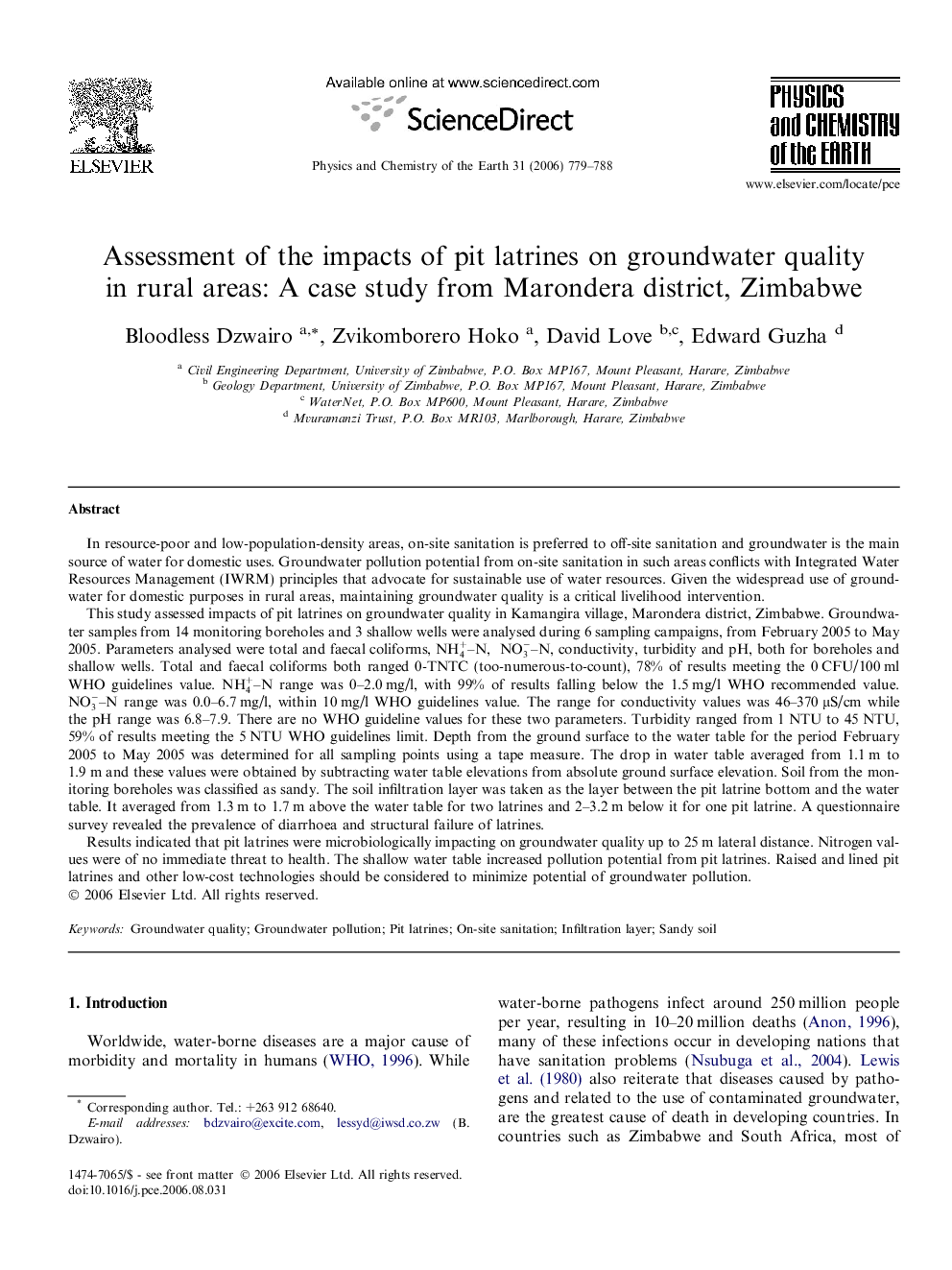| کد مقاله | کد نشریه | سال انتشار | مقاله انگلیسی | نسخه تمام متن |
|---|---|---|---|---|
| 4722174 | 1639408 | 2006 | 10 صفحه PDF | دانلود رایگان |

In resource-poor and low-population-density areas, on-site sanitation is preferred to off-site sanitation and groundwater is the main source of water for domestic uses. Groundwater pollution potential from on-site sanitation in such areas conflicts with Integrated Water Resources Management (IWRM) principles that advocate for sustainable use of water resources. Given the widespread use of groundwater for domestic purposes in rural areas, maintaining groundwater quality is a critical livelihood intervention.This study assessed impacts of pit latrines on groundwater quality in Kamangira village, Marondera district, Zimbabwe. Groundwater samples from 14 monitoring boreholes and 3 shallow wells were analysed during 6 sampling campaigns, from February 2005 to May 2005. Parameters analysed were total and faecal coliforms, NH4+–N, NO3-–N, conductivity, turbidity and pH, both for boreholes and shallow wells. Total and faecal coliforms both ranged 0-TNTC (too-numerous-to-count), 78% of results meeting the 0 CFU/100 ml WHO guidelines value. NH4+–N range was 0–2.0 mg/l, with 99% of results falling below the 1.5 mg/l WHO recommended value. NO3-–N range was 0.0–6.7 mg/l, within 10 mg/l WHO guidelines value. The range for conductivity values was 46–370 μS/cm while the pH range was 6.8–7.9. There are no WHO guideline values for these two parameters. Turbidity ranged from 1 NTU to 45 NTU, 59% of results meeting the 5 NTU WHO guidelines limit. Depth from the ground surface to the water table for the period February 2005 to May 2005 was determined for all sampling points using a tape measure. The drop in water table averaged from 1.1 m to 1.9 m and these values were obtained by subtracting water table elevations from absolute ground surface elevation. Soil from the monitoring boreholes was classified as sandy. The soil infiltration layer was taken as the layer between the pit latrine bottom and the water table. It averaged from 1.3 m to 1.7 m above the water table for two latrines and 2–3.2 m below it for one pit latrine. A questionnaire survey revealed the prevalence of diarrhoea and structural failure of latrines.Results indicated that pit latrines were microbiologically impacting on groundwater quality up to 25 m lateral distance. Nitrogen values were of no immediate threat to health. The shallow water table increased pollution potential from pit latrines. Raised and lined pit latrines and other low-cost technologies should be considered to minimize potential of groundwater pollution.
Journal: Physics and Chemistry of the Earth, Parts A/B/C - Volume 31, Issues 15–16, 2006, Pages 779–788